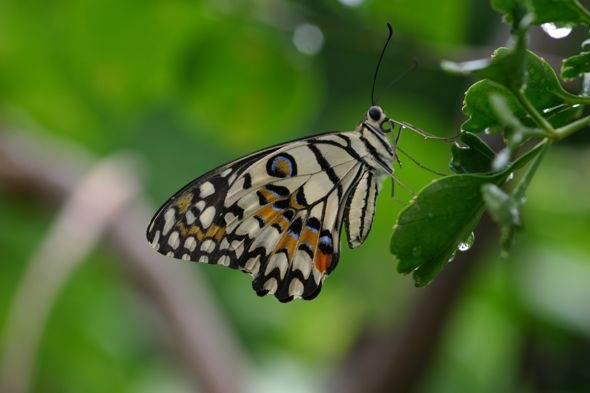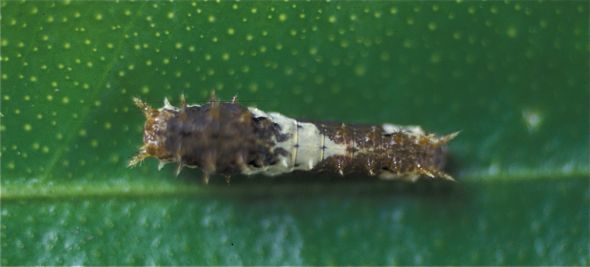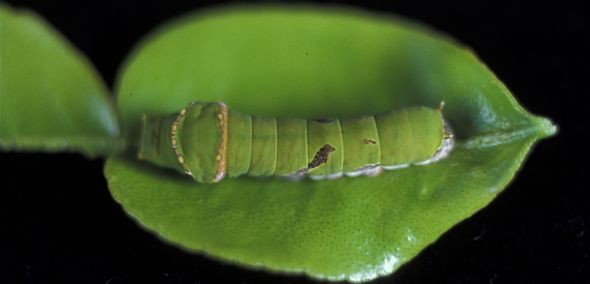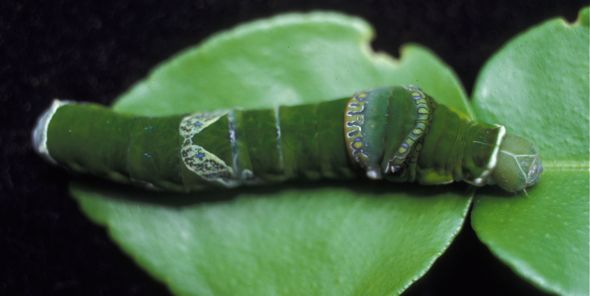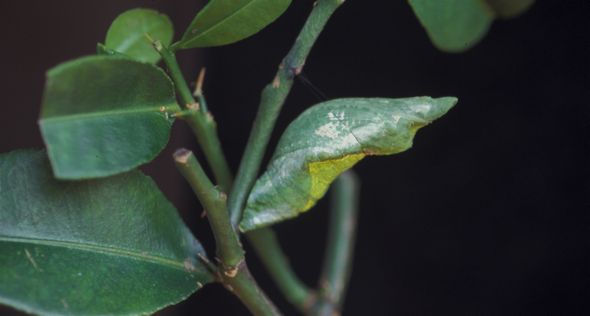The introductory post on this series LINK dealt with the butterflies associated with the Malayan Mistletoe (Dendrophthoe pentandra) found in my bird garden LINK.
This follow-up post covers butterflies associated with my Kaffir Lime tree, also known as limau purut (Citrus hystrix) that was grown for its delightful fragrant leaves used in Peranakan and Malay dishes. The tree is host to the Lime Butterfly (Papilio demoleus malayanus). The image above shows the colourful lowerside of the wings when the butterfly has them folded. When the wings are unfolded, the black with pale yellow markings on the upperside are exposed (below). Note that the red oval spot near the dorsum is missing as seen HERE. According to Khew Sin Khoon who runs the Butterfly Circle LINK, “Looks like the chemical process of metamorphosis didn’t complete properly. There are still some hints of red on the hindwings but very little. One of those aberrations that occur from time to time.”
The early instars of the caterpillars of the Lime Butterfly take the appearance of a birds’ droppings, thereby escaping the notice of potential predators (below-top). However, the fifth and last instar is green and looks like a normal caterpillar (below-bottom).
The Lime Butterfly as well as the Great Mormon (Papilio memnon distantianus that also occurs on the same lime tree belong to the Family Papilionidae that includes spectacularly large and conspicuously attractive members, commonly known as Birdwings and Swallowtails. The latter refers to the presence of a pair of prominent tailed hindwings.
The Great Mormon (Papilio memnon distantianus), the male of which is shown above, is predominantly black dusted with blue. Unlike most other species, this has a few different female forms. The image below, photographed from my lime plant, is an uncommon distantianous form, colourful and with a pair of prominent tails.
As with caterpillars of the Lime Butterfly, The first four instars appear like bird droppings. The fifth and last instar is shown below-top. The pupa is attached to the underside of a slender branch via a cremastral attachment and a silk girdle (below-bottom).
YC Wee & Khew Sin Khoon
Singapore
September 2013
(Photo Credit: Male Great Mormon by Khew Sin Khoon, all others by YC Wee)


